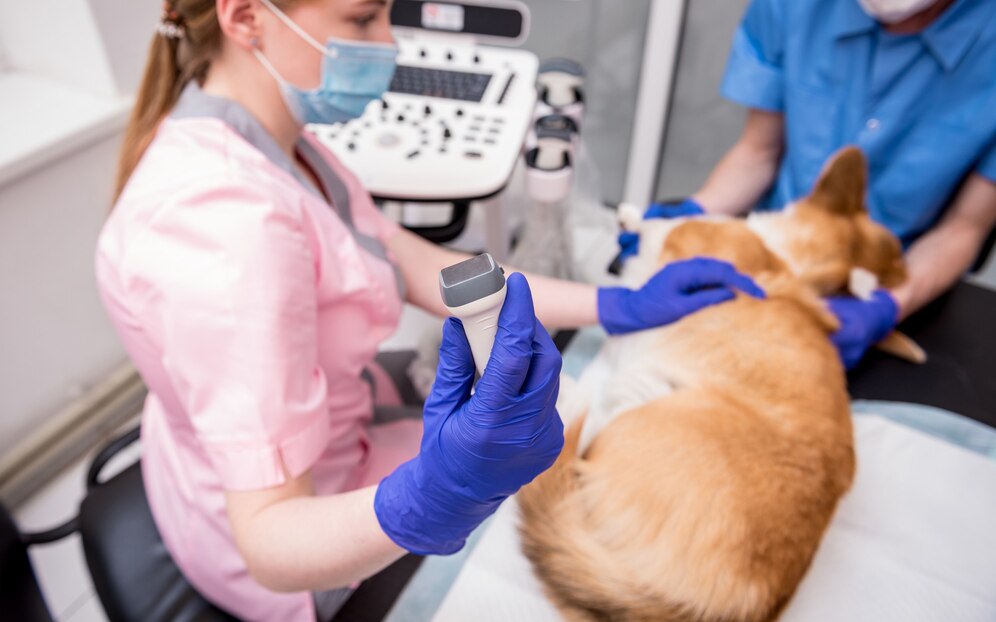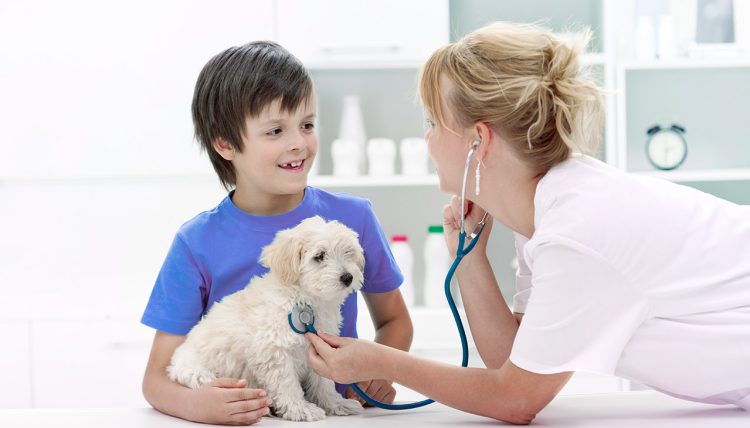Introduction:
Skin problems are common among pets, and they can manifest in many ways, ranging from mild itching to severe hair loss or painful lesions. Pet skin conditions can be caused by a variety of factors, including allergies, infections, parasites, and underlying health issues. As a pet owner, it’s essential to be able to recognize the signs of skin conditions early so you can get your pet the right treatment.
In this article, we will explore the signs that indicate your pet may have a skin condition, the common types of skin diseases in pets, and how these conditions can be treated effectively. By understanding the symptoms and seeking timely care, you can help your pet find relief from discomfort and avoid complications.
1. Common Signs That Your Pet Might Have a Skin Condition
There are several symptoms that may indicate your pet has a skin condition. It’s important to observe your pet’s behavior and physical appearance closely for any changes. Here are some common signs of skin problems in pets:
a. Itching and Scratching
Persistent itching or scratching is one of the most common signs of a skin condition. If your pet is constantly scratching, biting, or licking a particular area of their body, it’s likely that they are experiencing discomfort caused by skin irritation, allergies, or parasites.
b. Hair Loss (Alopecia)
If your pet is losing hair, it could be a sign of a skin problem. Hair loss can occur in patches or more generalized across the body, and it’s often accompanied by other symptoms like redness, scabbing, or inflammation.
c. Red, Inflamed, or Swollen Skin
Inflammation or redness of the skin can be a sign of an infection, allergy, or irritation. Look for areas of your pet’s skin that appear swollen, hot, or irritated. This may be a result of bacterial or fungal infections, insect bites, or dermatitis.
d. Scabs, Sores, or Crusty Bumps
Visible sores, scabs, or crusty lesions on your pet’s skin are often indicative of a skin infection, parasitic infestation, or an allergy-related issue. These marks can result from excessive scratching, which breaks the skin and leads to infections.
e. Odor
A strong, unpleasant odor coming from your pet’s skin or coat may indicate a bacterial or yeast infection. Such infections can occur when the skin becomes damaged or irritated, allowing microbes to thrive.
f. Dry, Flaky, or Greasy Skin
Dry, flaky skin that resembles dandruff is a sign of a condition known as seborrhea. This condition causes the skin to produce an excess of oils, leading to greasy, oily patches that may have a distinct odor. On the other hand, excessively dry skin could indicate dehydration, poor nutrition, or a skin infection.
g. Hot Spots (Acute Moist Dermatitis)
Hot spots are areas of inflamed, infected skin that become moist due to excessive licking or scratching. These spots are often red, raw, and swollen and can cause your pet significant discomfort. Hot spots are common in dogs but can also affect cats.
h. Behavioral Changes
If your pet is becoming more irritable, lethargic, or refusing to be touched, especially around certain areas of their body, it could be due to a skin condition. Infections or pain caused by skin problems may make your pet more sensitive to touch.
2. Common Types of Skin Conditions in Pets
Several types of skin conditions can affect your pet, each with its own cause and treatment requirements. Below are some of the most common skin conditions seen in dogs and cats:
a. Allergies
Pets can develop allergies to various environmental factors, such as pollen, dust mites, mold, or even certain ingredients in their food. Flea bites are also a common trigger for allergies in pets. When a pet is allergic to something, their immune system reacts by causing itching, redness, and inflammation in the skin.
- Symptoms: Itchy skin, hair loss, red spots, ear infections, watery eyes.
- Treatment: Identifying and eliminating the allergen is key to managing allergies. Your vet may recommend antihistamines, corticosteroids, or topical treatments to control symptoms.
b. Fleas and Other Parasites
Fleas, ticks, and mites are common external parasites that can cause significant skin problems in pets. Flea bites lead to itching, hair loss, and red skin. In severe infestations, fleas can also cause anemia. Mange, caused by mites, results in hair loss, scabs, and intense itching.
- Symptoms: Scratching, flea dirt (small black specks), hair loss, sores, red or inflamed skin.
- Treatment: Regular flea control treatments and medications prescribed by your vet, as well as mite and tick prevention.
c. Bacterial and Fungal Infections
Bacterial infections like pyoderma and fungal infections like ringworm can lead to skin irritation, scabs, and lesions. Fungal infections are more common in immunocompromised pets or those with moist, warm environments, such as skin folds.
- Symptoms: Redness, sores, discharge, hair loss, or thickened skin.
- Treatment: Antibacterial or antifungal medications (oral or topical), as well as keeping the affected area clean and dry.
d. Hot Spots (Acute Moist Dermatitis)
Hot spots are a common skin condition in dogs, especially in breeds with thick coats. They occur when a dog scratches or licks an area excessively, causing the skin to become inflamed and infected. Hot spots are often painful and can spread rapidly if not treated promptly.
- Symptoms: Red, moist, swollen, and painful skin, often accompanied by pus or discharge.
- Treatment: Cleaning the affected area, applying topical antibiotics, and preventing further scratching (often through the use of an Elizabethan collar).
e. Seborrhea
Seborrhea is a condition that results in flaky, dry, or greasy skin. It can be caused by various factors, including allergies, infections, and hormonal imbalances. There are two types of seborrhea: dry and oily.
- Symptoms: Dry, flaky skin or greasy patches with a strong odor.
- Treatment: Medicated shampoos, oral medications, and proper skin care can help control seborrhea. Regular bathing may be necessary to manage the condition.
f. Hormonal Imbalances
Hormonal disorders, such as hypothyroidism and Cushing’s disease, can lead to skin problems in pets. These imbalances affect the skin’s ability to repair and regenerate, leading to hair loss, thinning, and infections.
- Symptoms: Hair loss, thinning coat, scaly skin, and increased susceptibility to infections.
- Treatment: Treatment typically involves managing the underlying hormonal imbalance with medications or therapies prescribed by your vet.
g. Skin Tumors
Though less common, tumors or growths on the skin, such as lipomas or malignant melanomas, can occur in pets. These growths can cause swelling, changes in skin texture, and discomfort.
- Symptoms: Lump or bump on the skin, changes in the skin’s appearance or texture, or bleeding from the tumor.
- Treatment: Surgical removal of the tumor, biopsy for diagnosis, and additional treatments such as chemotherapy or radiation if the tumor is cancerous.

3. How to Treat Skin Conditions in Pets
The treatment for your pet’s skin condition will depend on the underlying cause. Here’s a general guide to the treatments your veterinarian may recommend:
a. Topical Treatments
For conditions like hot spots, fungal infections, or bacterial infections, topical treatments such as medicated shampoos, creams, or ointments are often prescribed. These treatments help to soothe the skin, reduce inflammation, and kill the bacteria or fungus causing the infection.
b. Oral Medications
If the skin problem is caused by a systemic issue, such as allergies or a bacterial infection, oral medications like antibiotics, antifungals, or corticosteroids may be necessary. These medications help treat infections from within and reduce overall inflammation.
c. Flea and Parasite Control
If fleas or other parasites are the cause of the skin problem, flea prevention treatments (such as oral pills, topical spot-on treatments, or collars) will be prescribed. Mite infestations, like mange, may require specific treatments such as medicated dips or oral medications.
d. Dietary Adjustments
In some cases, food allergies or sensitivities can cause skin problems. Your vet may recommend a special diet or hypoallergenic food to address the root cause of the skin condition.
e. Environmental Changes
If the skin issue is caused by environmental allergies, your vet may recommend changes to your pet’s living environment. This could include regular cleaning to reduce dust mites, avoiding exposure to certain plants or pollen, or using air purifiers.
f. Surgical Intervention
For more severe cases, such as skin tumors or cysts, surgical removal might be necessary. If your pet has an abscess or severely infected area, drainage may be required.
4. Preventing Skin Conditions in Pets
While not all skin conditions are preventable, there are several steps you can take to help reduce the likelihood of your pet developing skin problems:
- Regular grooming: Keeping your pet’s coat clean and free of tangles can help prevent infections.
- Flea prevention: Use flea control products regularly to prevent flea infestations.
- Healthy diet: Feed your pet a balanced diet to promote healthy skin and coat.
- Regular vet check-ups: Regular visits to the vet can help catch potential skin problems early and ensure your pet stays healthy.
5. Conclusion:
Skin conditions in pets can be a source of discomfort and distress, but with prompt treatment and proper care, many conditions can be managed effectively. If you notice any signs of skin problems, it’s important to consult with a veterinarian to determine the cause and get the right treatment. By staying proactive about your pet’s skin health, you can help them live a happy and comfortable life.























































